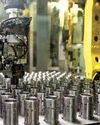
What does that do to the citizens in big cities; life gets totally disrupted, entire city comes to a standstill, people can’t get to their place of work or schools, colleges, banks etc. Even critical patients can’t reach hospitals. Buses and cars are stranded on the road; local trains can’t operate. At times such a situation can last for as long as two days – Gurgaon’s infamous Gurujam of 29 July 2016 had held the city to ransom for 20 hours and on 29/30 August 2017 Mumbai was locked down for two days – causing huge damage to the roads, houses and other buildings, millions worth of household goods and commercial stocks; there was a huge economic loss and even lives were lost. There have been similar mishaps in Chennai, Bengaluru, Srinagar and other places.
Why does this happen?
The answers are simple. Most urban topographies have ‘natural drainage channels’ and creeks. However heavy the downpour, some water percolates down and in due course, reaches the underground aquifers. Rest flows into the drainage channels or creeks and reaches the natural water bodies. Part of it, falling on roads and concrete floors, goes into storm drains that discharge into rivers and eventually the oceans. The hectic pace of construction in big cities endeavours to cover every square foot of land and parts of the creeks and channels also get covered under valuable real estate. Construction debris are dumped in the creeks with impunity and the network is disconnected at places. So, when there is heavy rainfall, water accumulates on the roads because it has no exit, except roadside municipal drains, which are too small.
This story is from the {{IssueName}} edition of {{MagazineName}}.
Start your 7-day Magzter GOLD free trial to access thousands of curated premium stories, and 9,000+ magazines and newspapers.
Already a subscriber ? Sign In
This story is from the {{IssueName}} edition of {{MagazineName}}.
Start your 7-day Magzter GOLD free trial to access thousands of curated premium stories, and 9,000+ magazines and newspapers.
Already a subscriber? Sign In

MEMORIES & IMPRESSIONS
Ratan Tata was an exceptional human being. He was a visionary leader, esteemed industrialist, and a humanitarian, who left an indelible mark on India and the world.

The Robotaxi Market
The robotaxi market is shaping up to be a high-stakes battleground as tech giants and automakers race to transform urban mobility.

And the Nobel Prize Goes to AI
The recent Nobel Prize T awards to AI pioneers affiliated with Google have sparked a broader conversation about Big Tech's influence on research and the limitations of traditional prize categories.

Ola Electrified
Once considered a trailblazer in India’s electric vehicle (EV) ecosystem, Bhavish Aggarwal’s Ola Electric now faces a major accountability crisis.

Sharp Slide in Industrial Output on Eve of Deepavali
India’s index of industrial production (IIP) saw a sharp reversal in August, contracting by 0.1 per cent, in stark contrast to the 4.7 per cent growth in July, mostly because of significant contractions in mining and electricity generation.

Heralding the Solar Era with Sustainable Electrification
RAJEEV KASHYAP on the economics of solar power, the hurdles in scaling it, and much more

A WELL-GREASED MACHINE
The OmniBook X14 laptop runs on first-generation Snapdragon X Elite, which bets big on Al-enabled productivity and battery life, but falls short when it comes to overall experience, says Deep Majumdar

DO NOT LETA HEALTH CRISIS RUIN YOUR FINANCIAL HEALTH
For a family of four living in a metro, it is recommended to opt for a family floater health insurance plan with a sum insured of at least Rs 15-20 lakh

Disruption Ahead: Beyond Organisation Charts and Structures
ALBERT EINSTEIN FAMOUSLY said, “We cannot solve our problems with the same thinking we used when we created them.

Dr. Rahul Shivajirao Kadam: A Visionary Leader Blending Sustainability, Innovation, And Social Empowerment
We are on the stage of global warming, and these technologies not only help prevent further damage but also leave behind a better environment for future generations.